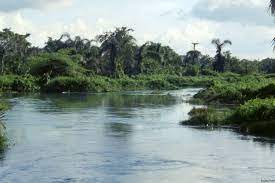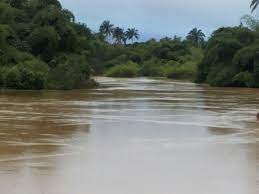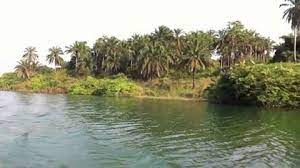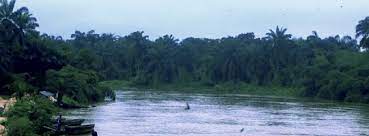Water is a beautiful gift of nature. Rivers, streams, lakes, seas, ponds, well, etc., are all sources of water. You may never have had a course to think of water beyond just something you take when you are thirsty, use when you wash, bath, cook, and clean. Isn’t it surprising that something as common as water largely escapes our analytical thoughts. Today, we would be talking water by looking at rivers in the southeast.
Since many rivers cut across regions, we would only look at rivers with their major presence in Igboland. We will not, for instance, discuss the Niger which drives its root in Guinea and passed through a handful of Nigerian states before making its way to the Atlantic. Only one southeast state, Anambra, has access to the Niger, so it is not particularly a Southeast river.
Here are three popular truly Southeast rivers profiled.
The Otamiri River

The Otamiri River is a popular river located in Imo State, and it is one of the major rivers in Imo State, Nigeria. The river takes its name from Ota Miri, a deity who owns all the waters that are called by his name, and who is often the dominating god of Mbari houses. The river flows south from Egbu past Owerri and through Eziobodo, Olokwu Umuisi, Nekede, Ihiagwa, Mgbirichi and Umuagwo to Ozuzu in Etche, in the Rivers State, from where it flows to the Atlantic Ocean.
The length of the river from its source to its convergence at Emeabiam with the Uramiriukwa River is 30 kilometres (19 mi). Ọ̀tá Ḿmírí (Otamiri) River which flows through Imo State and particularly Ụ́ràtà-Igbo communities where the Ḿbárí shrines where consecration in fulfillment of vows are made, are dedicated to his mother, Àlà the Earth Mother, and where he plays a very significant role.

The deity or alusi of the river is the female Imo who communities surrounding the river believed to be the owner of the river. Mmiri in Igbo language means water or rain. A festival for the Alusi is held annually between May and July. The Imo River features an 830-meter (2,720 ft) bridge at the crossing between Rivers State and Akwa Ibom State.
Omambala River

Omambala was the name given to an ancient goddess whose river runs from the Uzo-uwa-ani underworld to Anam and Onicha axis, where it links with Nkisi and Niger/Mgbakili Rivers in their journey to the Atlantic Ocean, according to the people who are indigenous people.
There are several mysteries and myths surrounding Omambala which led to different communication of meaning and interpretations by many tribes and nationalities, whence the pronunciation of Omambala as Anambra by the earlier European explorers.
Before States were created, Omambala was formerly used to refer to the indigenous people from Ogidi, Umunya, Nzam, Awkuzu, Aguleri, Anam, Nsugbe, Umueri, Anaku, Nteje, Nando, Igbariam, Nkwelle-Ezunanka, Ogbunike, the Ayamelum clan, as well as others. Give and take a few more areas make up the Omambala heritage.
Omambala people have different dialects, traditions, customs, and ethnophilosophical values with many esoteric and mystical belief systems that place a strong significance on spiritualism quite over capitalism, and are extremely held together by an eternal bond of custom, religious tradition, language and the Omambala River. This is due to the very strong bond and attachment that has existed between them and their natural ecosystem and cosmology.
Omambala River length of 256km (159mi) makes it one of the longest rivers in Nigeria.
Connect with us on Linkedin
Post Disclaimer
The opinions, beliefs and viewpoints expressed by the author and forum participants on this website do not necessarily reflect the opinions, beliefs and viewpoints of Anaedo Online or official policies of the Anaedo Online.

